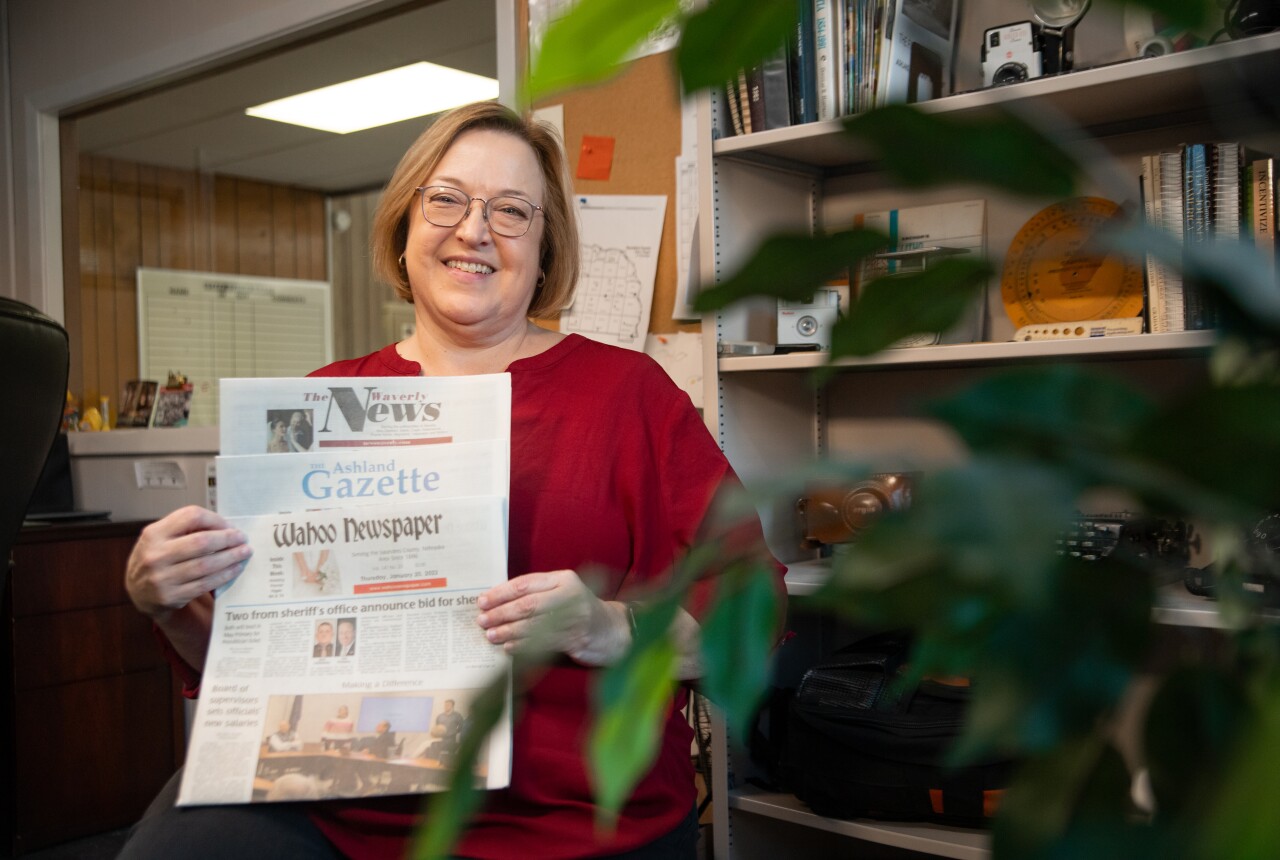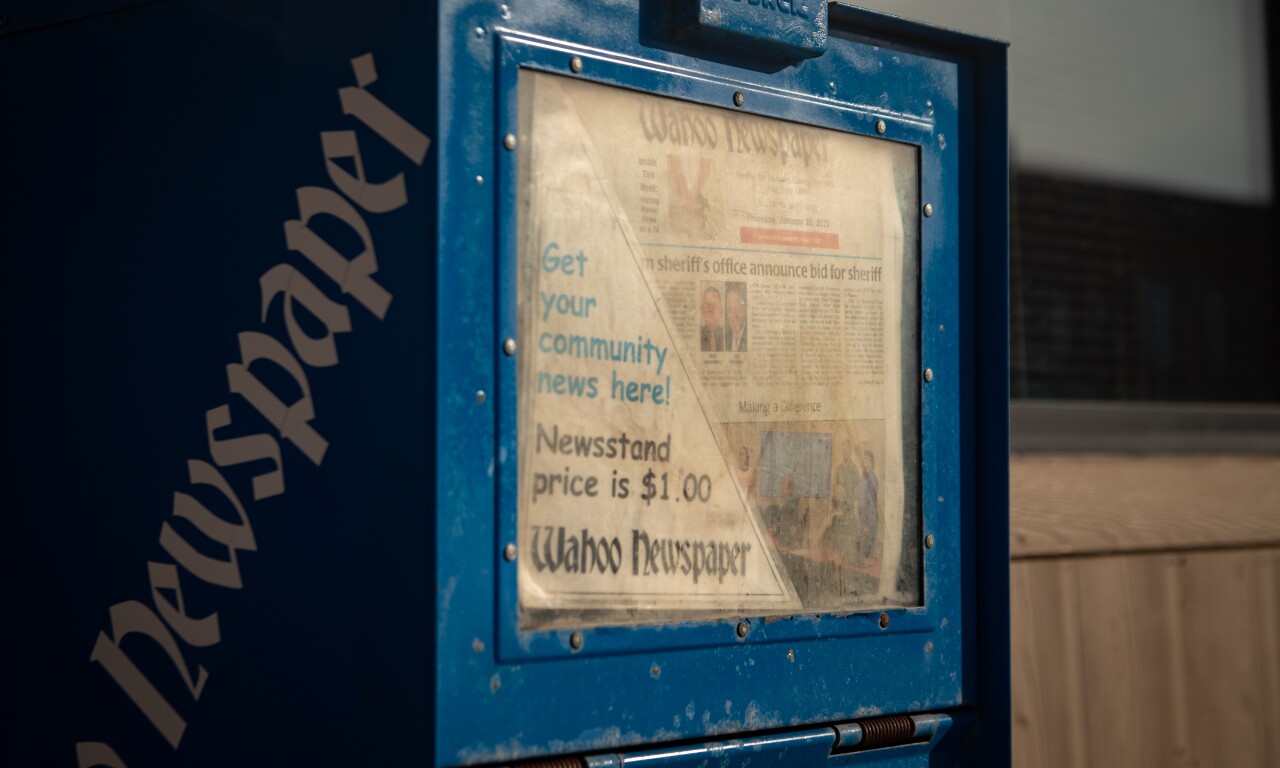WAHOO, Neb. (KMTV) — In a world of noise and never-ending competition that aims to attract attention and patronage, it can be difficult to sift out what is worth our time or money. But in such a crowded and commerce-filled landscape, getting in the habit of critiquing all of the information you encounter can save you in the long run.
Local news is the lowest-risk scenario to begin bulking up your media literacy muscles and a good way to start is by identifying who created the information and why they were motivated to do so.
“If you find yourself feeling any type of emotion when you watch, listen or read something – you’re feeling angry, or happy, or sad, or whatever, like pay attention to that and see if there’s intention behind it,” said Tracy Simmons, a Scholarly Assistant Professor of Journalism at Washington State University and the founder of a nonprofit, independent media startup, Spokane Favs.
“Is someone trying to make you feel that way? Or is it just kind of built-in naturally to the story? And you might have to do a little research and get online and see what publication you’re looking at, and maybe — like people do with me — maybe Google this writer and see if they’re writing for credible sources.”

Critically important to news literacy is the “who,” or the identification of sources. A journalistic organization will provide coverage of discourse, but not insert itself into it. A reliable media source can highlight a business or service but won’t promote sales. If either of these criteria is encountered, the information may actually be an advertisement in disguise, could possibly be an opinion column or someone that is otherwise not a source of credible and unbalanced information. This may help you get ahead of misinformation before you fall susceptible.
Simmons has taught multimedia journalism at universities around the Pacific Northwest but her own career in journalism has broader horizons. She sold her first media startup, Credible.com, in 2009 to the Religion News Service, trading Connecticut for Washington state, where she began creating another startup from scratch. SpokaneFavs.com is fast approaching its tenth anniversary and Simmons again earned the attention of the Religion News Service, where she writes as a national correspondent.
Establishing a publication in a city that already had mainstream TV news stations and a newspaper required Simmons to arm herself with the passion that first brought her to journalism and stick to her ethical guns in order to prove her startup to be a credible source of news. Deciding to be non-sectarian and report on all religions, rather than from the viewpoint of a single religion, is a key demarcation in making an objective news site versus an enthusiast's blog. The result solidified her in a modern wave of industry leaders.
“I was one of the first people to be certified as a media entrepreneur through the Poynter Institute. That just kind of shows how long I’ve been doing this. 2009 is when I started Creedible, and back then that wasn’t really, it was kind of unheard of for a reporter to just say ‘I’m going to be independent and go start my own publication online. And now it’s super common … you can see a whole list of independent publishers.”
But taking a leap of faith to build a news publication isn’t the only trust involved in the creation and consumption of media. Both Simmons and Wahoo Newspaper Executive Editor Suzi Nelson say that there is a little bit of trust that relies on readers even after they’ve done their due diligence.
“You just really have to trust us that we know our sources, and we know who we’re talking to,” said Nelson, who grew up in Nebraska and has spent more than 20 years of a 30-year career in journalism in eastern Nebraska. “But I really think that when it comes to — especially local journalism — you have to know that we know who we’re talking to, you have to trust us. I know that’s hard but, you know, it’s hard to trust people nowadays.”

The trust may be hard to give, but it’s just like handing over the keys of your car to a mechanic at the automotive shop: you can do your research to find a good shop, but at some point you have to trust that the professional will execute their training and expertise.
“When you’re talking about a newspaper like ours, or even the Omaha World-Herald, or Lincoln Journal Star, The Fremont Tribune, we are reliable,” said Nelson, who is also executive editor for the weekly Ashland Gazette and News Waverly. “We are trained journalists. Whereas, if you’re just getting your information off of the internet, you’ve really got to make sure you know where that information is coming from.”
Simmons recommends that readers engage with their favorite local reporters on social media. It can help to see community journalists as regular people in the community.
Over the years, Nelson's weekly newspaper staff has shrunk dramatically, in part due to less revenue from print advertisers, but the coverage area has remained the same, forcing everyone left on staff to take on more assignments and roles to keep up. But just like Simmons some 1,500 miles away, it’s the passion for truth-telling others’ stories that drive these journalists.

“We wouldn’t be in this job if we're not going to tell the truth. Because that’s just what you — you go into this job knowing that’s what you’re going to be doing. And if that’s too difficult, then you shouldn’t be doing it,” the University of Nebraska Omaha grad said. “I think that we are loyal because we’re devoted to our communities, at least in small-town journalism ... I know I am. And not just Wahoo, but Ashland, Waverly; I want to do a good job for all the communities that we cover.”
The media landscape includes a vast and varied range of organizations, many of which are not beholden to the journalistic standards that local broadcasters and publishers are. Local journalists don't represent entertainment, marketing, or groups that maintain other objectives outside of distributing news. The people who are taking photos at the local high school basketball game, writing up the happenings of the weekly city council meeting and reporting on the ground in the Omaha area are people who live in the metro and work unpredictable schedules to connect the community with truthful information. And yes, they see your comments on social media, too.
Newsmakers are the subject of the news, but local news organizations are simply disseminators of information.

Download our apps today for all of our latest coverage.
Get the latest news and weather delivered straight to your inbox.





